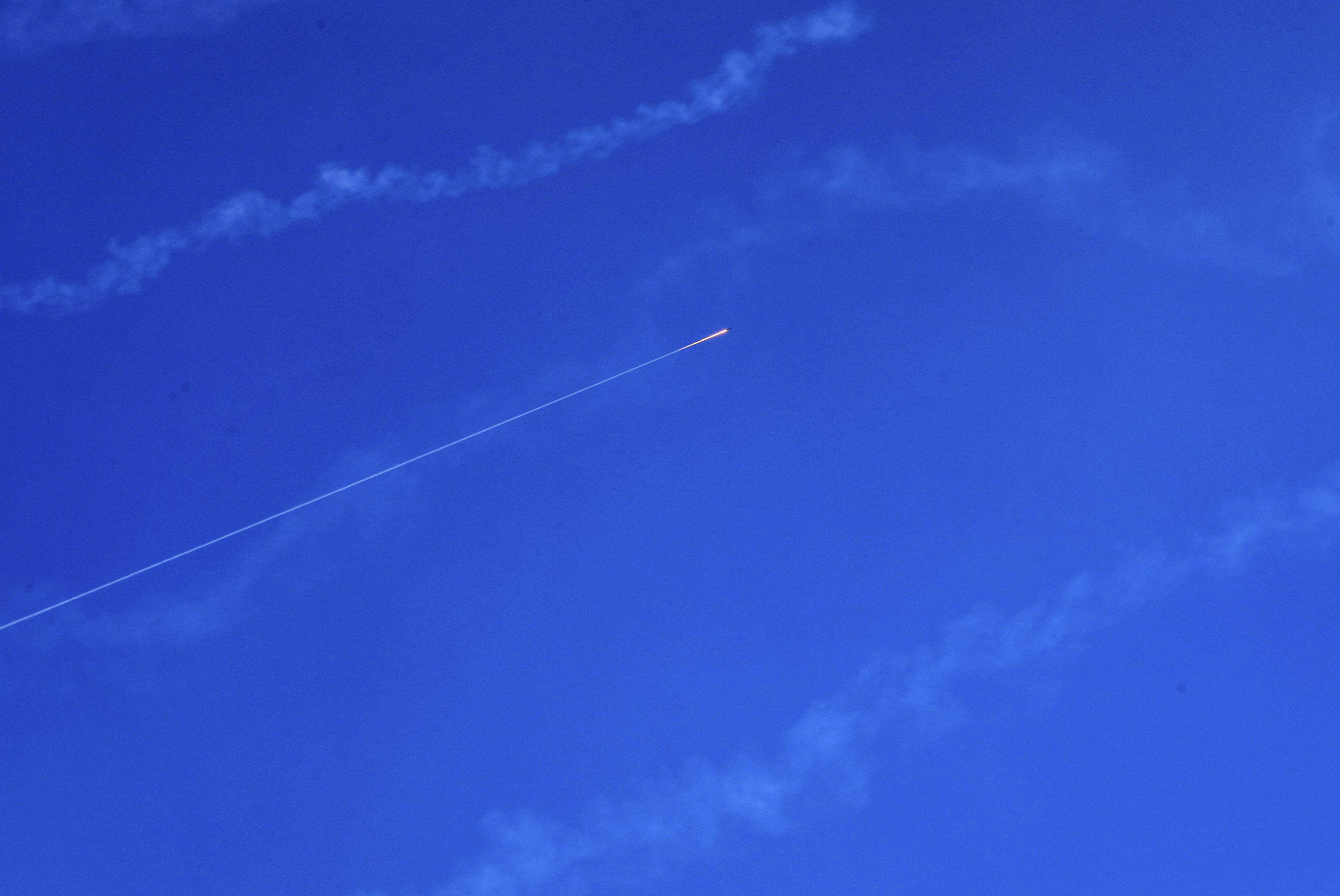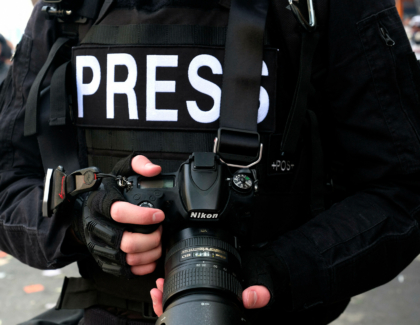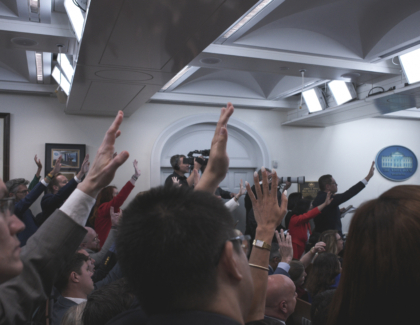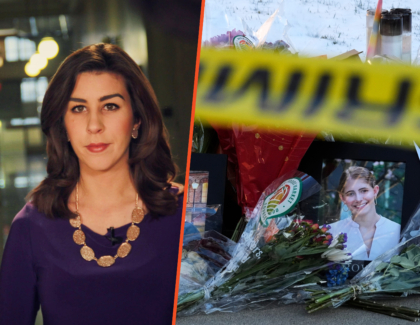Sign up for the daily CJR newsletter.
On September 29, 2023, Jake Sullivan, the US national security adviser, said at an event organized by The Atlantic that “the Middle East region is quieter today than it has been in two decades.” On September 30, tens of thousands of Israelis took to the streets to oppose Prime Minister Benjamin Netanyahu’s planned overhaul of the country’s judiciary—the thirty-ninth weekend in a row that they had done so. On October 1, Itamar Ben Gvir, Israel’s hard-line national security minister, was reportedly excluded from a meeting of top security officials; media reports suggested a rift, but Netanyahu’s office insisted that the meeting had been focused on threats from Iran, not internal matters. On October 2, Amir Tibon and other journalists at Haaretz reported that Israel was considering “various steps to prevent an escalation in the Gaza Strip,” hoping that this might ease a diplomatic normalization deal with Saudi Arabia. On October 3, Iranian state media quoted that country’s supreme leader as saying that any country making such a deal with Israel would be “betting on a losing horse.” On October 4, Reuters reported on “weeks of violent protests by young men in Gaza,” but quoted an Israeli official who noted the “relative restraint” of Hamas. On October 5, Werner Sonne wrote in Haaretz about the importance of narrative dominance in “modern battles”; he was talking about the Yom Kippur War, which he had covered back in 1973. On October 6, the fiftieth anniversary of that war fell, and many news outlets marked it.
Anniversary coverage, of course, has now swelled again across the world’s media because of what happened on October 7 of last year: Hamas militants attacked Israel from Gaza, killing around twelve hundred people and taking hundreds hostage. Among the victims that day were at least seven journalists. Three of them—Mohammed Al-Salhi, Mohammad Jarghoun, and Ibrahim Mohammad Lafi—were shot dead in Gaza or at its border crossing with Israel; two—Ayelet Arnin and Shai Regev—were shot dead by Hamas at a music festival in the Israeli desert; Roee Idan was shot dead by Hamas in kibbutz Kfar Aza; Yaniv Zohar suffered the same fate in kibbutz Nahal Oz. Tibon, of Haaretz, was at his home in Nahal Oz the same day, but survived after hiding for hours in a safe room. The Atlantic ran an essay on his ordeal as part of its anniversary coverage, adapted from Tibon’s new book.
Anniversary coverage can offer welcome opportunities for reflection, remembering, even reckoning. As I’ve written before, it also has limits as a genre. Both sides of the coin have been in evidence this time: various news organizations have used the one-year marker of October 7 to publish moving recollections of that horrific day and the brutal war that has followed it; it’s equally true to say that the news does not unfold in such neat parcels of time, or linearly from fixed moments—especially not in the Middle East, as evidenced by the smattering of pre–October 7 headlines I cited above, with their cocktail of complacency, continuity, and ominous foreshadowing. “We are faced with two different narratives,” Karim Kattan, a Palestinian writer, told the French publication Courrier International ahead of the anniversary. “One with the construction of a date, of a memory around this date. A formed moment, in a way. The other is a sequence that never ends, an unformed process.”
At the same time, none of this is to deny that October 7 was a moment of rupture, and that its consequences have been tragic and profound: in addition to the death toll in Israel, that country’s military campaign in Gaza has killed more than forty thousand people and counting; the count in Lebanon is now into the thousands as well, as Israel has intensified its ongoing war with Hezbollah, which is still firing missiles at Israel; Iran has recently done that, too, and the world is now waiting to see how Israel will respond. And the shock waves of October 7 continue to be felt by journalists all over the world—from major Western newsrooms to volunteer-run magazines to budding reporters on college campuses—with the stakes getting higher the closer one gets to the ground, even if the history of all these dynamics itself runs much deeper than October 7 in isolation.
In an audio essay in the wake of October 7, Ezra Klein, a columnist at the New York Times, observed that, in the online reaction to the unfolding story, it was “striking to see how fast we were turning on each other, how we became obsessed not with what should actually be done or even what was actually being done, but with what was and could be said and by whom.” As I noted at the time, this dynamic was already playing out within Western newsrooms, with several members of the media losing their jobs over speech in solidarity with Gaza. This state of affairs and the debate around it has not abated since then; if anything, the October 7 anniversary brought a fresh wave of it. Al Jazeera English published a documentary in which anonymous staffers at CNN and the BBC were quoted as accusing newsroom leaders of failing “to hold Israeli officials to account and of interfering in reporting to downplay Israeli atrocities.” (Both broadcasters denied any bias in their coverage.)
Then, on the anniversary itself, internal tensions at CBS News emerged into public view. They stemmed from an interview that Tony Dokoupil, a morning-show anchor, conducted last week with Ta-Nehisi Coates about the latter’s new book, in which he blasts Israel’s treatment of Palestinians (and US elite media complicity in whitewashing it); Dokoupil told Coates that if his name were taken off the book, its section on Israel “would not be out of place in the backpack of an extremist,” before asking why he omitted discussion of the countries and terror groups that want to “eliminate” Israel. (“I am most concerned, always, with those who don’t have a voice,” Coates replied.) The interview stirred some backlash at CBS, where some journalists felt that Dokoupil had shown bias; yesterday, executives told staff that the interview had not met network standards; but then came the backlash to the backlash, with other staffers arguing that all Dokoupil had done was challenge a one-sided account. Some were reportedly unhappy that bosses had chosen to admonish Dokoupil on October 7.
As I wrote previously in relation to Klein’s words, the broader debate here—as to who has the power to say what in newsrooms, and whose voices get heard as a result—really matters. And the line dividing speech from action is porous. As Klein suggested, though, what has been done matters most, and this applies to how October 7 has affected the press in the region as well as anything else. In the weeks after the Hamas attack, I wrote about how Israeli officials were threatening to use extraordinary security measures to ban Al Jazeera from operating inside the country; eventually, they did as much; more recently, Israeli forces also raided the broadcaster’s offices in the occupied West Bank and slapped it with a shutdown order there, too. Meanwhile, Israeli officials have continued to limit access to Gaza. Since October 7, the count of foreign reporters who have managed to enter the territory without an Israeli escort appears to stand at one: CNN’s Clarissa Ward, who went in briefly with an Emirati medical team in December.
Journalists already based in Gaza, meanwhile, have lost their lives in extraordinary numbers. In previous newsletters—after ten days, one month, six months of war—I’ve quoted assessments from the Committee to Protect Journalists noting the various grim records that had been smashed by the death toll among media workers covering the conflict; ahead of the October 7 anniversary, the same group put its latest count at 128 fatalities since that date, “more journalists than have died in the course of any year since CPJ began documenting journalist killings in 1992,” the vast majority in Gaza, the majority under forty. As I’ve written before, other groups have recorded even higher figures; some groups have contested the distinctions that international press-freedom watchers often draw between journalists deemed to have been killed in the course of their work and not. If anniversaries can feel like arbitrary and porous measures, so, too, can the lines demarcating journalists from other civilians. However you count it, the toll on the region’s press is enormous. And ongoing.
On September 29, 2024, Wafa Al-Udaini, a journalist in Gaza who wrote for The Guardian, among other publications, was killed in an Israeli air strike, alongside her husband and two of her children. On October 4, CPJ published its count of 128 journalist fatalities under the headline “one year and climbing.” The climb would continue before the anniversary: on October 6, a journalist named Hassan Hamad was killed in a strike on a refugee camp in Gaza, reportedly after receiving threatening messages from an Israeli officer. He was nineteen years old.
Other notable stories:
- After Kamala Harris appeared on Alex Cooper’s wildly popular podcast, Call Her Daddy, the liberal commentator Dan Pfeiffer assessed Harris’s media strategy and why it appears to be irking more traditional journalists. “Harris’s strategy reflects the fact that Alex Cooper is more impactful than a nightly news anchor or Sunday Show host,” Pfeiffer writes. “Not a great thing for democracy, and it’s a very bitter pill for most political reporters to swallow, but it is undoubtedly true.” Meanwhile, Donald Trump went on Hugh Hewitt’s radio show and sowed false and hateful rhetoric about immigrants (again). And Harris appeared on 60 Minutes last night, but Trump did not. During the episode, Scott Pelley, who had been scheduled to interview Trump, ran down his campaign’s “shifting explanations” for his decision to back out.
- CJR’s Feven Merid reports that police are increasingly arresting visual journalists in the US—not least at protests linked to the war in Gaza. “One of the most frequently cited reasons for arresting journalists at protests is unlawful assembly––the offense invoked when police are dispersing a crowd,” Merid writes. “Journalists are typically exempt, but this year, that has seemed to matter less and less.” Madison Swart, a photojournalist in New York who works for outlets including Out and Cosmopolitan and was briefly detained while covering a protest in May, told Merid that “police seem to not really have much respect for the work that we do, and they don’t seem to really care about differentiating us from the protests, from the protesters.”
- Recently, Jason Garcia, a journalist in Florida, reported that the state’s health department had threatened legal action against a local news station that aired an ad placed by proponents of a constitutional amendment that would enshrine abortion rights. Officials claimed that the ad makes false statements about health risks linked to the state’s existing law, but Slate’s Mark Joseph Stern writes that the claims made in the ad appear to be true, and that even if they were false, the ad “would still receive bulletproof First Amendment protections,” while TV stations “would have an insurmountable constitutional shield against any punishment for airing it.”
- Dalia Parete, of the China Media Project, spoke with Minxin Pei, an expert in Chinese governance and mass surveillance, about his new book on the country’s “sentinel state,” and how it differs from the more common idea of the “surveillance state.” China’s high-tech “digital panopticon” is much-hyped, Parete notes, but the country’s surveillance structure is unique in that it “anticipates rather than simply [reacting] to dissent” and “combines the latest technology with grassroots mobilization and internalized censorship, involving citizens in the very machinery controlling them.”
- And the Spanish newspaper El Mundo obtained dozens of intelligence documents shining new light on the case of Pablo González, a freelance journalist for the Spanish news agency EFE (and, briefly, Voice of America) who was arrested in Poland in 2022 on suspicion of being a Russian spy before returning to Moscow as part of a prisoner swap earlier this year. Per El Mundo, González was tasked with gathering intelligence on Alexei Navalny, the late opposition leader (and sometime journalist).
New from CJR: On anticipatory obedience and the media
Has America ever needed a media defender more than now? Help us by joining CJR today.







